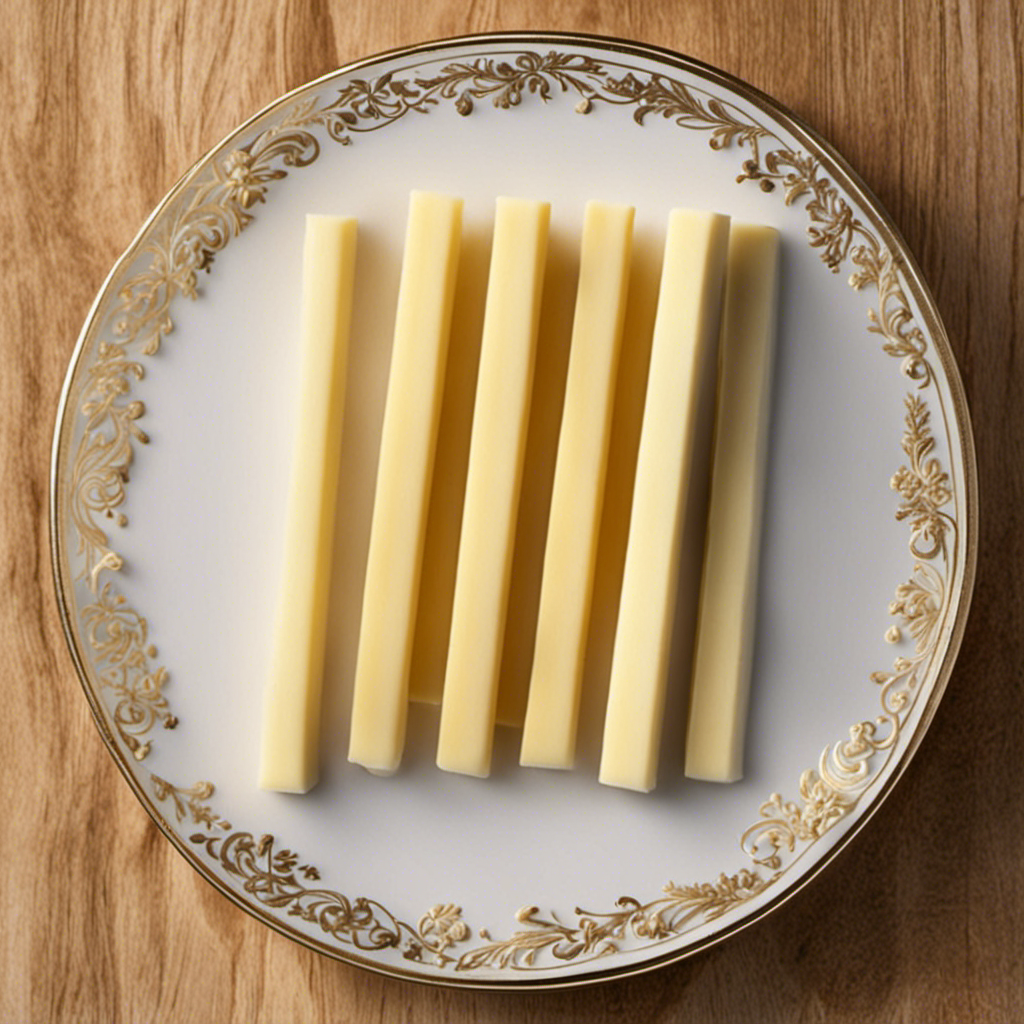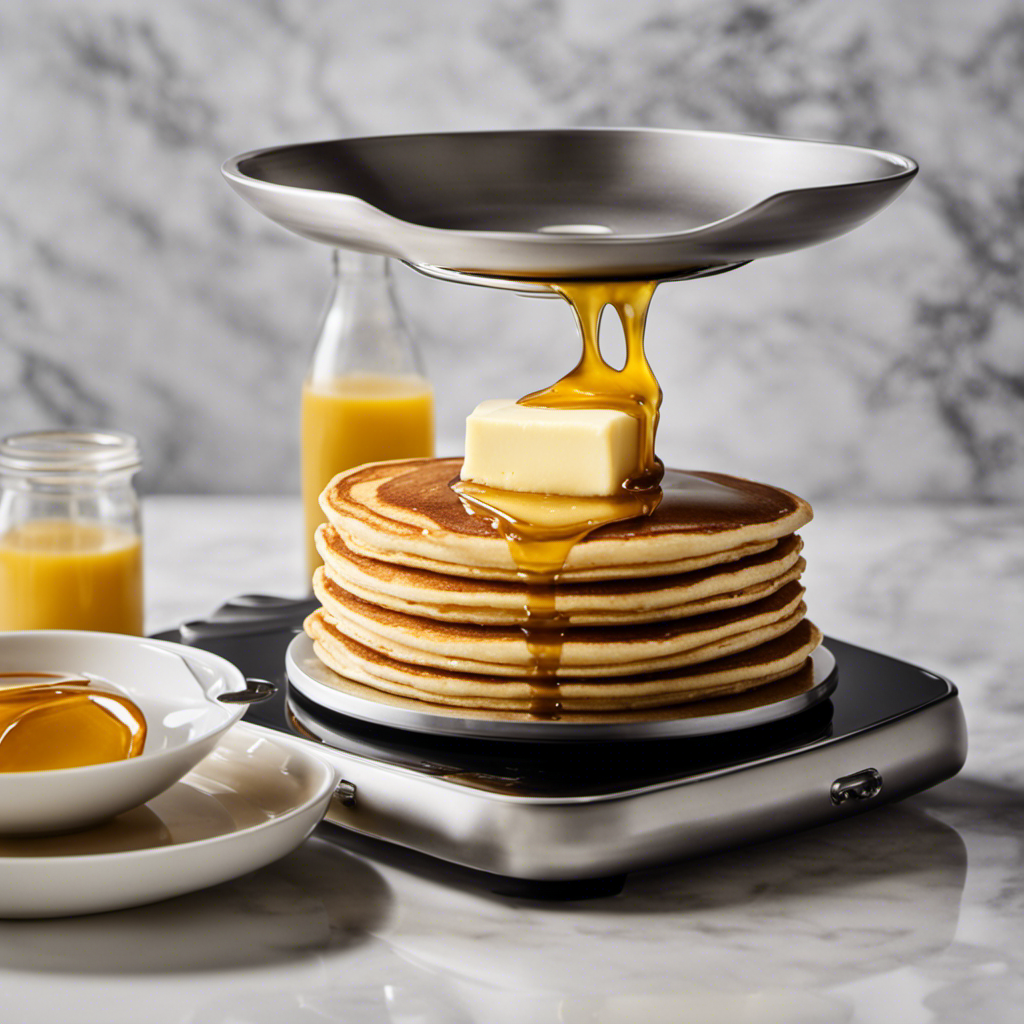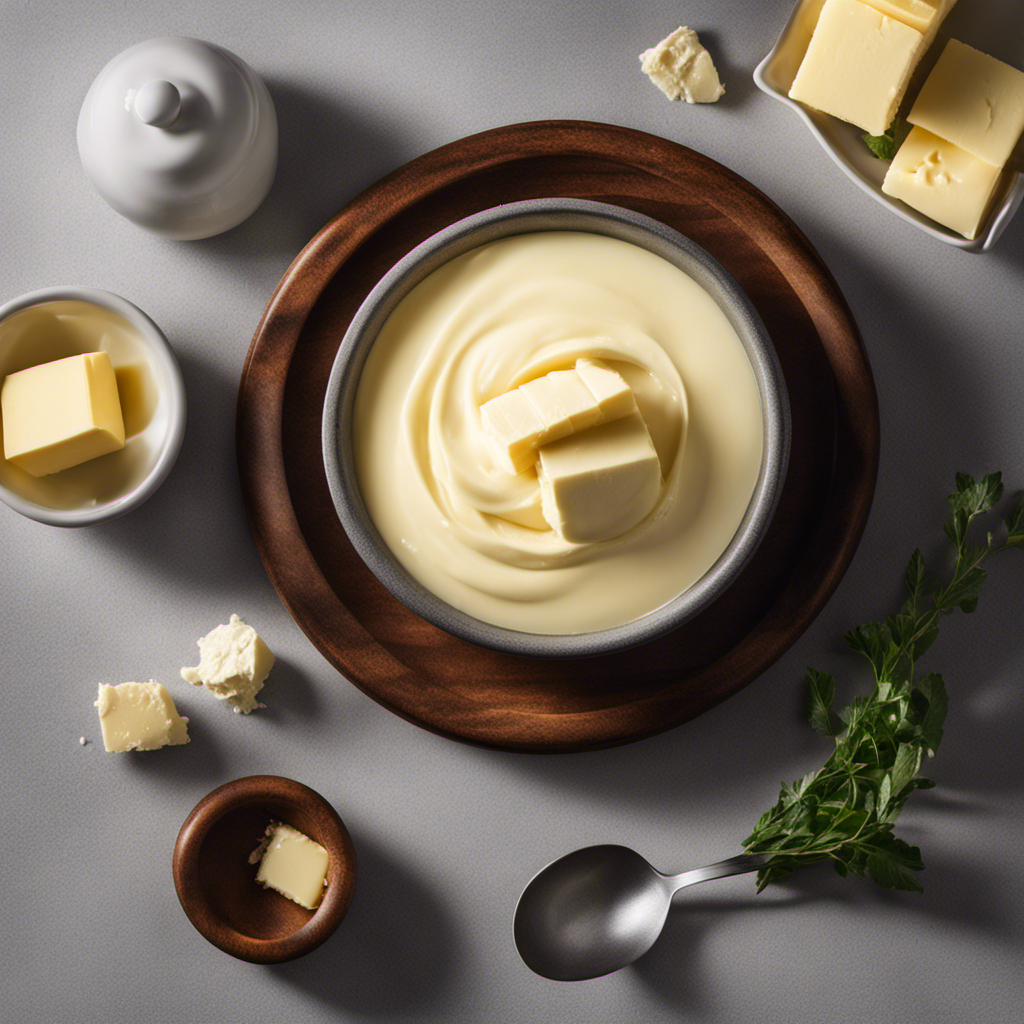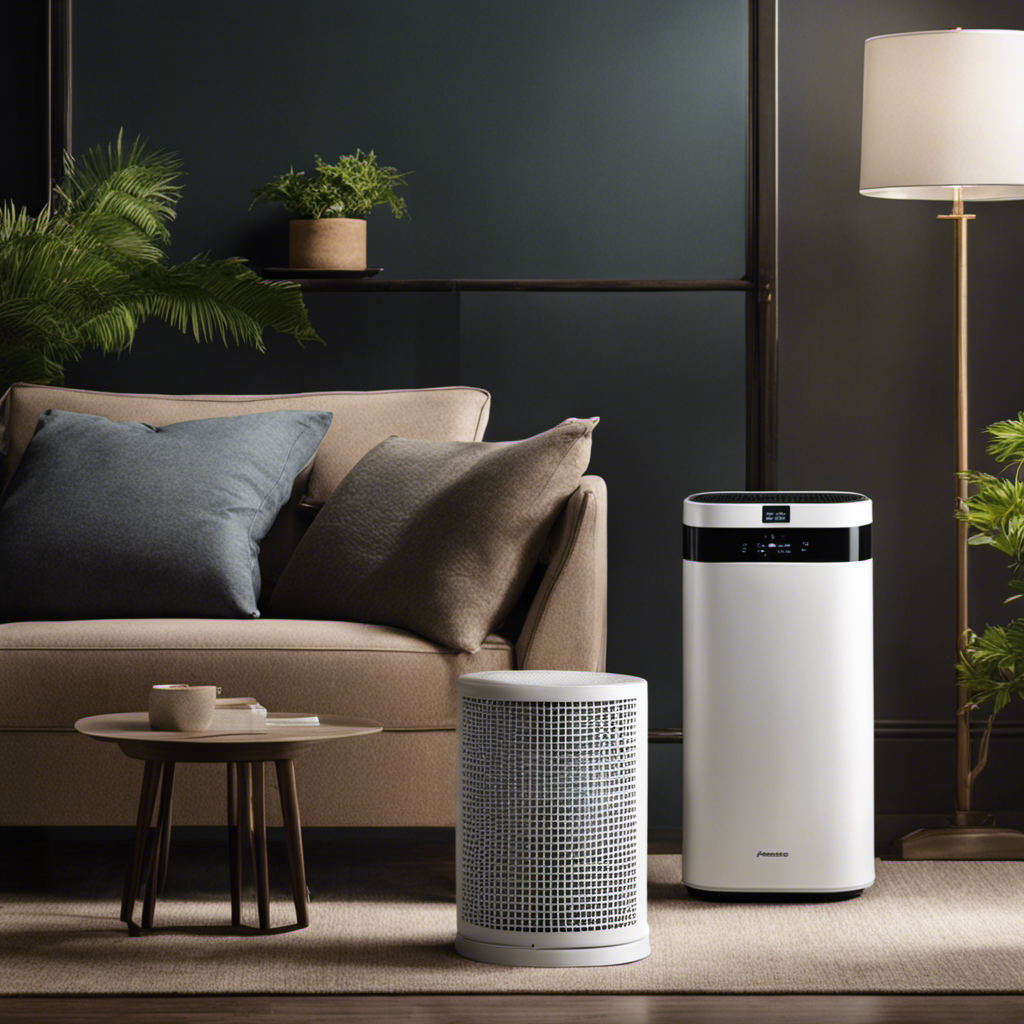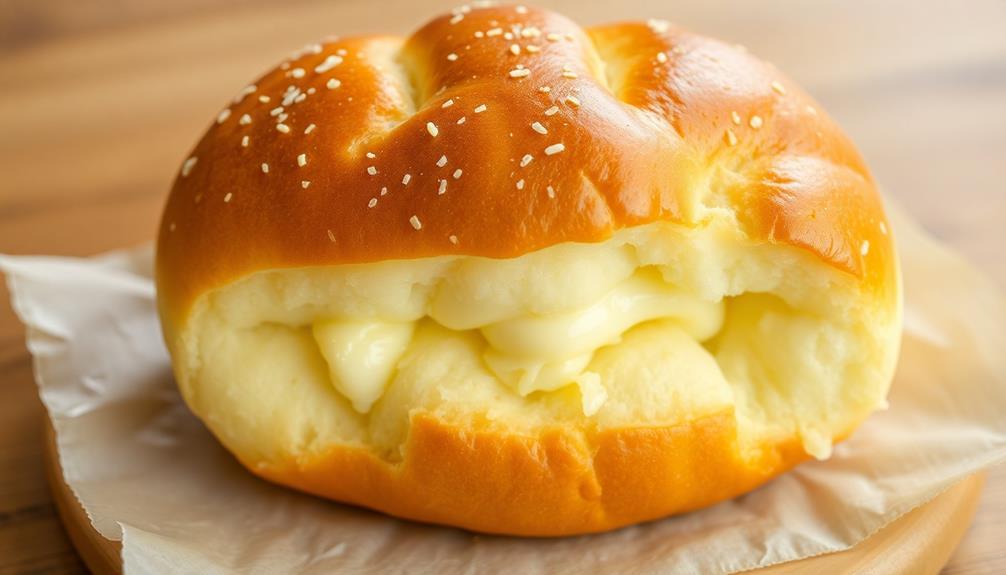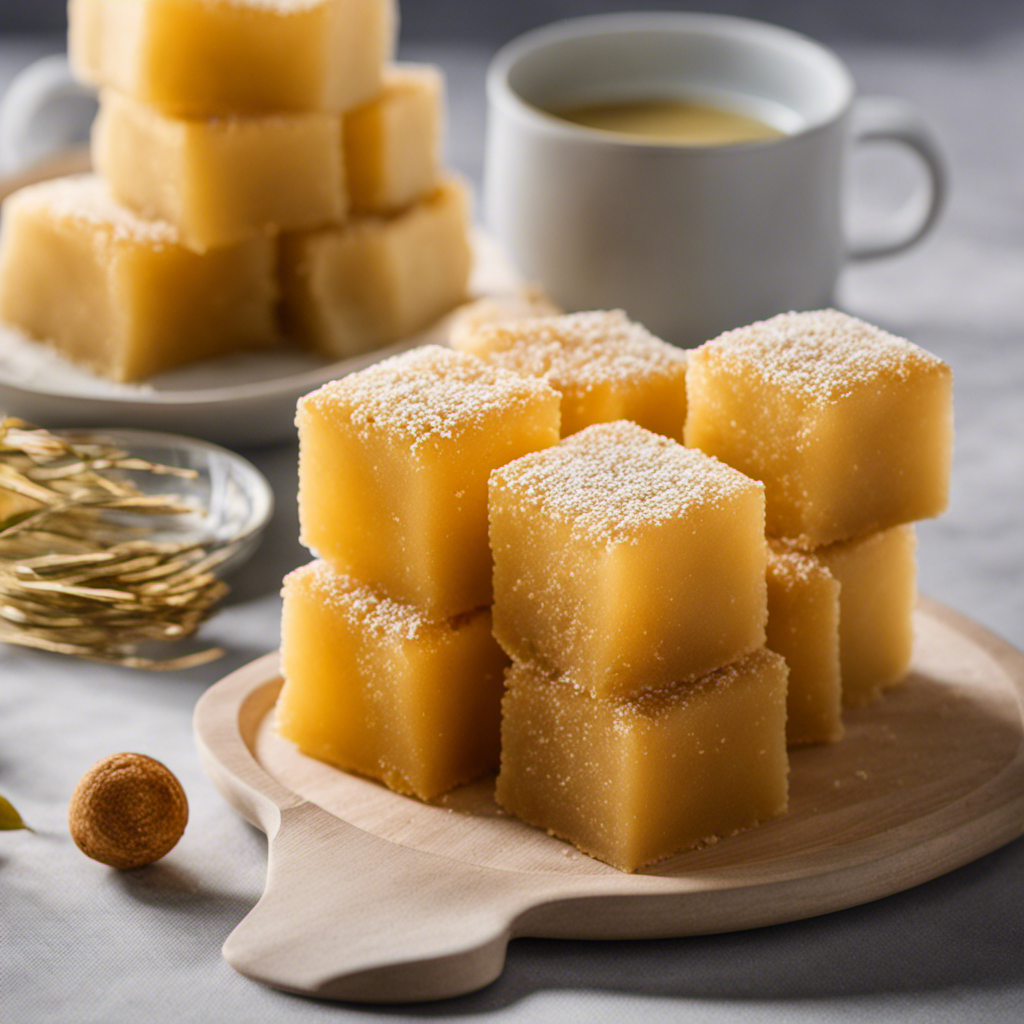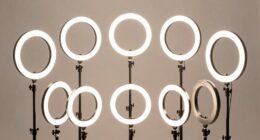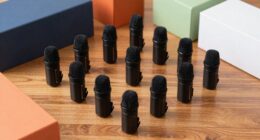As an experienced cook in the home kitchen, I’ve discovered that accurate measurements are crucial for baking. Therefore, understanding how many sticks equal 1/3 cup of butter is essential when a recipe requires it.
In this article, I’ll break down the science of butter measurements and share a handy conversion method to help you confidently calculate how much 1/3 cup of butter is in sticks.
Get ready to master the art of butter conversions and elevate your baking game!
Key Takeaways
- 1/3 cup of butter is equal to 5 and 1/3 tablespoons.
- Converting cups to tablespoons is necessary when determining the amount of butter in sticks.
- The ratio of 1 cup to 16 tablespoons is useful for converting butter measurements.
- Understanding butter conversions, including the conversion of cups to tablespoons, can simplify cooking.
Understanding Butter Measurements
1/3 cup of butter is equivalent to about 5 and 1/3 tablespoons. Understanding butter conversions is essential in baking and cooking. Accurate measurements are crucial to ensure the desired outcome of your recipe. When it comes to butter, different recipes may call for measurements in cups, tablespoons, or even sticks. Knowing how to convert between these measurements will help you follow your recipe accurately.
It is important to note that butter can come in different forms, such as sticks or blocks, which can affect the measurements. By understanding the conversions, you can easily adjust your butter quantity to match your recipe requirements.
Now let’s dive into converting cups to sticks: the basics.
Converting Cups to Sticks: The Basics
When it comes to baking, understanding butter measurements and cup-to-stick conversions is essential.
Knowing the equivalencies between different measures of butter can help you accurately follow a recipe and achieve the desired results.
In this discussion, we will explore the different measurements for butter and simplify the process of converting cups to sticks for easier baking.
Butter Measurement Equivalencies
To convert 1/3 cup of butter into sticks, it’s helpful to know the measurement equivalencies. Here are some handy tips for understanding butter measurements:
-
One stick of butter is equal to 1/2 cup or 8 tablespoons. So if you have 1/3 cup of butter, you would need approximately 5 and 1/3 tablespoons.
-
Another way to measure butter is by weight. One stick of butter weighs 4 ounces or 113 grams. Therefore, 1/3 cup of butter would be roughly 2.67 ounces or 75 grams.
-
If you don’t have a measuring cup, you can use the markings on the butter wrapper. Most butter sticks have tablespoon markings on the wrapper, making it easy to measure out the desired amount.
Understanding butter measurements and knowing these handy tips can make baking and cooking much easier. So the next time you come across a recipe that calls for 1/3 cup of butter, you’ll know exactly how much to use!
Simplifying Cup-To-Stick Conversions
If you’re looking to simplify conversions between cups and sticks, here’s a helpful tip.
When it comes to understanding conversions, it’s important to know that 1 cup of butter is equal to 2 sticks.
This means that if a recipe calls for 1/3 cup of butter, you can simply divide 1 by 3 to get the fraction in decimal form, which is approximately 0.33.
Then, multiply 0.33 by 2 to find out how many sticks you need. In this case, it would be around 0.66 sticks of butter.
However, since you can’t really measure 0.66 of a stick, it’s best to round it up to 0.75 sticks or 3/4 of a stick.
This practical measuring tip will make it easier for you to convert between cups and sticks in your recipes.
The Science of Butter: Breaking It Down
Understanding the science behind butter will help you break it down and determine how much is 1/3 cup of butter in sticks. Here’s what you need to know:
-
Butter composition: Butter is made up of approximately 80% milk fat, 16% water, and 4% milk solids. This composition gives butter its smooth texture and rich flavor.
-
Melting point: Butter has a relatively low melting point, around 32-35 degrees Celsius (90-95 degrees Fahrenheit). This is why it easily melts in your mouth or when heated in a pan. It also means that butter can quickly become soft or even melt at room temperature.
-
Stick measurements: In the United States, butter is commonly sold in sticks that weigh 1/2 cup or 113 grams. Therefore, 1/3 cup of butter would be equivalent to approximately 5 and 1/3 tablespoons or 75 grams.
Knowing the composition and melting point of butter can help you better understand its properties and make accurate conversions in your recipes.
Calculating 1/3 Cup of Butter in Sticks
When it comes to baking, it’s important to have accurate measurements of ingredients. One common measurement in baking recipes is butter, which can be measured in cups or sticks.
Knowing the equivalents and how to convert between the two can make a big difference in the outcome of your baked goods. Let’s dive into the world of butter measurement equivalents and learn how to convert cups to sticks for a precise and successful baking experience.
Butter Measurement Equivalents
To convert 1/3 cup of butter to sticks, you’ll need to know the measurement equivalents. Here are three important things to understand about butter ratios and some tips for baking with butter:
-
Butter ratios: In baking, butter is often measured in sticks rather than cups. One stick of butter is equal to 1/2 cup or 8 tablespoons. This means that 1/3 cup of butter is approximately 5 and 1/3 tablespoons.
-
Softened butter: When a recipe calls for softened butter, it means that the butter should be at room temperature, around 70°F. Softened butter is easier to incorporate into batters and doughs, resulting in a smoother texture.
-
Cold butter: Some recipes, like pie crusts or biscuits, require cold butter. This helps create flaky layers when the cold butter melts in the oven. To achieve this, cut the butter into small cubes and chill it in the refrigerator before using.
Now that you understand the butter measurement equivalents, let’s move on to converting cups to sticks.
Converting Cups to Sticks
Understanding conversions between different units of measurement can be tricky, especially when it comes to baking. One common measurement mistake is not knowing how to convert cups of butter to sticks.
To avoid any mishaps in your recipes, it’s important to know the correct conversion. In the United States, one stick of butter is equal to 1/2 cup or 8 tablespoons. So, if a recipe calls for 1/3 cup of butter, you will need approximately 5 tablespoons and 1 teaspoon of butter, which is slightly more than half a stick.
By understanding these conversions and avoiding common measurement mistakes, you can ensure the accuracy of your recipes and achieve delicious results.
Now, let’s move on to some handy tips for measuring butter accurately.
Handy Tips for Measuring Butter
One way to measure butter more easily is by using a conversion chart. Here are some handy tips for measuring butter accurately:
- Use a knife or a butter dish with measurements marked on it to easily cut the desired amount of butter.
- Soften the butter slightly before measuring, as it’ll be easier to work with and measure accurately.
- If the recipe calls for melted butter, measure the solid butter first and then melt it to the desired amount.
By following these tips, you can ensure that you measure butter accurately for your recipes.
However, if you find conversion charts and measurements confusing, don’t worry! In the next section, we’ll simplify the process of mastering butter conversions.
Mastering Butter Conversions: Simplified
If you’re feeling overwhelmed by butter conversions, here’s a simplified way to master them. Calculating butter ratios and converting butter measurements can be tricky, but with a few key tips, you’ll be a pro in no time.
First, it’s important to know that one stick of butter is equal to 1/2 cup or 8 tablespoons. This knowledge will serve as a foundation for your conversions.
For example, if a recipe calls for 1/3 cup of butter, you can easily determine that it is approximately 5 and 1/3 tablespoons or about 2 and 2/3 ounces.
Frequently Asked Questions
How Do I Convert Grams of Butter to Sticks?
To convert grams of butter to sticks, you can use conversion methods available online or consult a recipe book. It’s also helpful to know butter alternatives for baking, such as margarine or coconut oil.
Can I Use Margarine Instead of Butter in a Recipe That Calls for 1/3 Cup of Butter?
Using margarine as a substitution for butter in a recipe that calls for 1/3 cup of butter is doable. However, keep in mind that margarine has a higher water content, which can affect the texture and flavor of the final dish.
Is It Possible to Substitute Oil for Butter in a Recipe That Requires 1/3 Cup of Butter?
Substituting oil for butter in a recipe is possible. Different types of oil can be used for baking, such as vegetable oil or coconut oil. The amount of oil needed would be the same as the amount of butter called for in the recipe.
How Can I Measure 1/3 Cup of Butter if I Don’t Have a Measuring Cup?
I can measure 1/3 cup of butter without a measuring cup by using the tablespoon method. 1/3 cup is equivalent to 5 and 1/3 tablespoons or 10 and 2/3 teaspoons.
Can I Use Unsalted Butter Instead of Salted Butter in a Recipe That Calls for 1/3 Cup of Butter?
Yes, you can use unsalted butter instead of salted butter in a recipe that calls for 1/3 cup of butter. The difference is just in the salt content, so adjust accordingly.
Conclusion
In conclusion, knowing how to convert measurements in the kitchen is crucial for any aspiring chef. Understanding the science behind butter and being able to calculate measurements accurately can make a huge difference in the outcome of your culinary creations.
By mastering butter conversions, you can confidently tackle any recipe that calls for a specific amount of butter in sticks. So next time you’re faced with the question of how much is 1/3 cup of butter in sticks, you’ll have the knowledge and skills to confidently answer.
Happy cooking!
